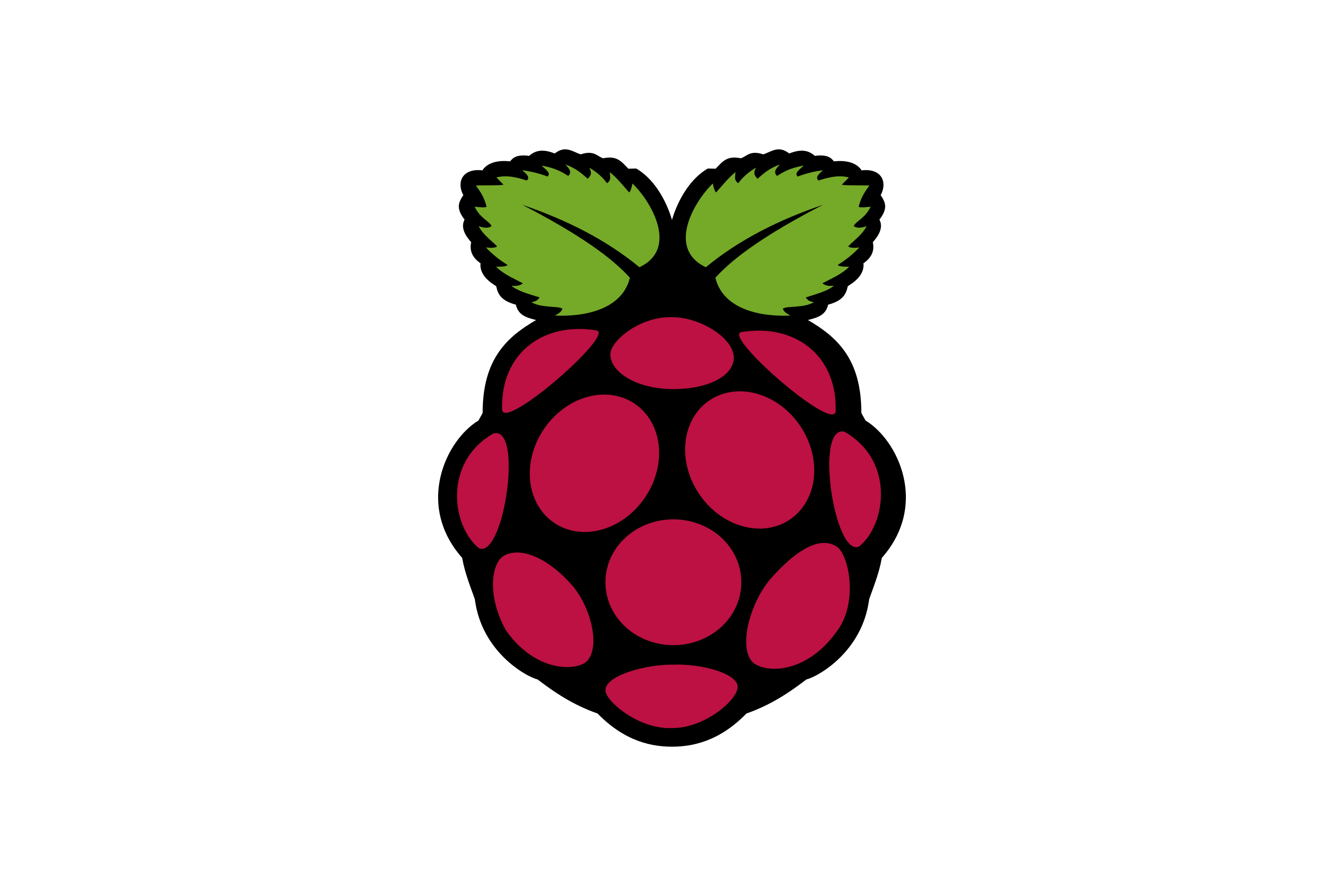Securely Connect RemoteIoT VPC Raspberry Pi For Free
Are you looking to securely connect your Raspberry Pi to a Virtual Private Cloud (VPC) using RemoteIoT without spending a dime? If so, you're in the right place. In today's interconnected world, remote access to IoT devices like Raspberry Pi has become essential for managing projects, monitoring systems, and automating tasks. However, ensuring secure connections while maintaining cost efficiency can be challenging. This article will guide you step-by-step on how to achieve this using RemoteIoT, a reliable and free solution for securely connecting your Raspberry Pi to a VPC.
Whether you're a hobbyist, a developer, or a business professional, understanding how to securely connect your Raspberry Pi to a VPC is crucial. This process not only enhances your IoT project's security but also ensures seamless communication between your devices. In the following sections, we will explore the benefits of using RemoteIoT, provide a detailed setup guide, and address common troubleshooting issues. By the end of this article, you will have the knowledge to implement this solution confidently.
Let’s dive into the world of secure remote IoT connections and discover how RemoteIoT can revolutionize the way you manage your Raspberry Pi projects. From setting up the environment to optimizing performance, we’ll cover everything you need to know to get started. Keep reading to unlock the potential of secure and cost-effective IoT connectivity.
Table of Contents
Introduction to RemoteIoT
RemoteIoT is a cloud-based platform designed to simplify the process of connecting and managing IoT devices remotely. It provides users with a secure and efficient way to access their devices, such as Raspberry Pi, over the internet without exposing them to potential security threats. By leveraging RemoteIoT, users can establish a Virtual Private Cloud (VPC) environment that ensures encrypted communication between their devices and the cloud.
One of the standout features of RemoteIoT is its ability to offer a free tier for small-scale projects. This makes it an ideal choice for hobbyists and developers who want to experiment with IoT solutions without incurring additional costs. RemoteIoT supports various operating systems and devices, making it highly versatile and adaptable to different use cases.
Whether you're managing a single Raspberry Pi or an entire fleet of IoT devices, RemoteIoT provides the tools and infrastructure needed to streamline your operations. Its user-friendly interface and robust security protocols make it a reliable choice for both beginners and experienced users.
Benefits of Using RemoteIoT
Using RemoteIoT to connect your Raspberry Pi to a VPC offers numerous advantages. Below are some of the key benefits:
- Enhanced Security: RemoteIoT employs advanced encryption protocols to ensure that your data remains protected during transmission. This is particularly important for projects involving sensitive information.
- Cost Efficiency: The free tier of RemoteIoT allows users to connect their devices without any financial investment, making it accessible for small-scale projects.
- Scalability: Whether you're managing one device or hundreds, RemoteIoT can scale to meet your needs without compromising performance.
- Reliability: The platform is designed to provide consistent uptime and minimal latency, ensuring smooth communication between your Raspberry Pi and the VPC.
- User-Friendly Interface: RemoteIoT's intuitive dashboard makes it easy to monitor and manage your devices, even for users with limited technical expertise.
These benefits make RemoteIoT a compelling choice for anyone looking to securely connect their Raspberry Pi to a VPC. Its combination of security, affordability, and ease of use sets it apart from other solutions in the market.
Prerequisites for Setting Up
Before you begin setting up your Raspberry Pi to connect to a VPC using RemoteIoT, there are a few prerequisites you need to fulfill. Ensuring that these requirements are met will make the setup process smoother and more efficient.
Hardware Requirements
- Raspberry Pi: Ensure you have a Raspberry Pi model that supports your project requirements. Models like Raspberry Pi 4 are recommended for better performance.
- Internet Connection: A stable and reliable internet connection is essential for maintaining a secure connection to the VPC.
- Power Supply: Use a compatible power adapter to ensure your Raspberry Pi operates without interruptions.
Software Requirements
- Operating System: Install a compatible OS such as Raspberry Pi OS (formerly Raspbian).
- RemoteIoT Account: Create a free account on the RemoteIoT platform to access its features.
- SSH Access: Enable SSH on your Raspberry Pi to facilitate remote access during the setup process.
By preparing these prerequisites, you'll be well-equipped to proceed with the setup and ensure a successful connection between your Raspberry Pi and the VPC.
Step-by-Step Setup Guide
Now that you have fulfilled the prerequisites, let's walk through the step-by-step process of securely connecting your Raspberry Pi to a VPC using RemoteIoT. Follow these instructions carefully to ensure a seamless setup.
Step 1: Install Raspberry Pi OS
Begin by installing Raspberry Pi OS on your device. You can download the latest version from the official Raspberry Pi website. Use a tool like Raspberry Pi Imager to flash the OS onto your microSD card. Once installed, boot up your Raspberry Pi and complete the initial setup, including connecting to Wi-Fi and enabling SSH.
Step 2: Create a RemoteIoT Account
Visit the RemoteIoT website and sign up for a free account. During the registration process, you will be asked to provide basic details such as your email address and a password. Once your account is created, log in to access the dashboard.
Step 3: Register Your Raspberry Pi
In the RemoteIoT dashboard, navigate to the "Devices" section and click on "Add Device." Follow the on-screen instructions to register your Raspberry Pi. You will need to provide the device's unique identifier, which can be found by running the command cat /proc/cpuinfo in the terminal.
Step 4: Install RemoteIoT Agent
Download and install the RemoteIoT agent on your Raspberry Pi. This agent facilitates communication between your device and the RemoteIoT platform. You can install it by running the following commands in the terminal:
sudo apt update sudo apt install remoteiot-agent Step 5: Configure VPC Connection
Once the agent is installed, configure the VPC connection by following the instructions provided in the RemoteIoT dashboard. This typically involves specifying the VPC details and setting up encryption keys to secure the connection.
By following these steps, you will have successfully connected your Raspberry Pi to a VPC using RemoteIoT. The next section will focus on securing your connection to ensure maximum protection.
Securing Your Connection
Security is a top priority when connecting your Raspberry Pi to a VPC. RemoteIoT provides several features to enhance the security of your connection. Below are some best practices to ensure your setup remains protected.
Enable Two-Factor Authentication (2FA)
Two-factor authentication adds an extra layer of security to your RemoteIoT account. By requiring a second form of verification, such as a code sent to your phone, you can prevent unauthorized access even if your password is compromised.
Use Strong Encryption Protocols
RemoteIoT employs industry-standard encryption protocols, such as TLS and AES, to protect data during transmission. Ensure that these protocols are enabled and configured correctly to safeguard your communication.
Regularly Update Software
Keeping your Raspberry Pi OS and RemoteIoT agent up to date is crucial for addressing potential vulnerabilities. Regular updates ensure that you benefit from the latest security patches and features.
Restrict Access to Authorized Users
Limit access to your RemoteIoT dashboard and Raspberry Pi to trusted individuals only. Use role-based access control to assign specific permissions to users based on their responsibilities.
By implementing these security measures, you can significantly reduce the risk of unauthorized access and ensure the integrity of your IoT projects.
Optimizing Performance
To get the most out of your Raspberry Pi and RemoteIoT setup, it's important to optimize performance. Here are some tips to enhance the efficiency and reliability of your connection.
Monitor Resource Usage
Keep an eye on your Raspberry Pi's CPU, memory, and disk usage. Tools like htop can help you identify resource bottlenecks and optimize your system accordingly.
Reduce Latency
Minimize latency by choosing a VPC region that is geographically close to your Raspberry Pi. This reduces the distance data needs to travel, resulting in faster communication.
Optimize Network Settings
Adjust your network settings to prioritize traffic for your IoT devices. Use Quality of Service (QoS) settings on your router to ensure consistent performance.
Automate Routine Tasks
Automate repetitive tasks, such as backups and updates, using scripts or scheduling tools. This reduces manual intervention and ensures your system remains up to date.
By following these optimization strategies, you can achieve a high-performing and reliable connection between your Raspberry Pi and the VPC.
Troubleshooting Common Issues
Even with careful setup, you may encounter issues when connecting your Raspberry Pi to a VPC using RemoteIoT. Here are some common problems and their solutions.
Connection Drops
If your connection frequently drops, check your internet stability and ensure that your Raspberry Pi is not overheating. You can also try restarting the RemoteIoT agent to resolve temporary glitches.
Authentication Errors
Authentication errors may occur if your credentials are incorrect or if 2FA is not configured properly. Double-check your login details and ensure that 2FA is set up correctly.
Slow Performance
Slow performance can be caused by high resource usage or network congestion. Use monitoring tools to identify the root cause and take appropriate action, such as upgrading your hardware or optimizing your network.
By addressing these common issues, you can ensure a smooth and uninterrupted connection between your Raspberry Pi and the VPC.
Use Cases and Applications
Securely connecting your Raspberry Pi to a VPC using RemoteIoT opens up a wide range of possibilities. Below are some common use cases and applications for this setup.
Home Automation
Use your Raspberry Pi to control smart home devices, such as lights, thermostats, and security cameras. RemoteIoT ensures that your home automation system remains secure and accessible from anywhere.
Remote Monitoring
Monitor environmental conditions, such as temperature and humidity, using sensors connected to your Raspberry Pi. The data can be securely transmitted to the VPC for analysis and visualization.
Industrial IoT
Deploy Raspberry Pi devices in industrial settings to monitor equipment performance and predict maintenance needs. RemoteIoT's secure connection ensures that sensitive data remains protected.
These use cases demonstrate the versatility and potential of securely connecting your Raspberry Pi to a VPC using RemoteIoT.
Alternative Solutions
While RemoteIoT is an excellent choice for securely connecting your Raspberry Pi to a VPC, there are alternative solutions available. Here are a few options to consider:
- Ngrok: A popular tool for creating secure tunnels to localhost. It's easy to set up but may lack some advanced features compared to RemoteIoT.


Detail Author:
- Name : Herminia Larson
- Username : felicia.jakubowski
- Email : christy00@satterfield.com
- Birthdate : 2007-04-09
- Address : 82604 Veum Isle Suite 467 Kemmerton, OK 63866
- Phone : 743.410.1899
- Company : Towne-Wisozk
- Job : Decorator
- Bio : Earum nesciunt non expedita sed commodi facilis rerum. Neque quas quam pariatur in. Impedit aut ducimus voluptatem ipsa. Tempore nam iste porro itaque mollitia ratione reprehenderit.
Socials
instagram:
- url : https://instagram.com/watson_o'connell
- username : watson_o'connell
- bio : Laboriosam consectetur aut sed. Molestiae officiis aut quaerat dolores dolores qui est.
- followers : 6558
- following : 2208
facebook:
- url : https://facebook.com/watson.o'connell
- username : watson.o'connell
- bio : Praesentium facilis fugiat similique illo ea sint.
- followers : 4726
- following : 686
linkedin:
- url : https://linkedin.com/in/watson_real
- username : watson_real
- bio : Ut sint ut saepe ut. Non veritatis iste dicta.
- followers : 1777
- following : 1123